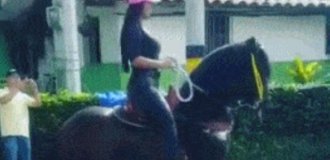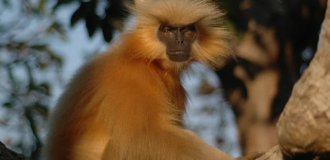Exotic milk: what do spiders, stingrays, jellyfish, and worms feed their babies? (15 photos)
What's the main and unique characteristic of mammals? It's not hard to guess, since it's mentioned in the name of the class of animals. For hundreds of years, people believed that only mammals were capable of feeding their young with specially prepared food. So we were even more disappointed when we learned that milk or its analogues are found in everything from birds to jellyfish! 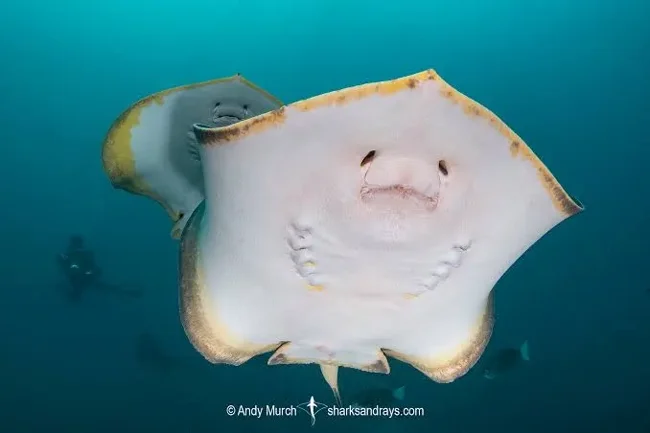
Spider Milk
As a teaser, here's perhaps the most unusual case of non-mammalian feeding. In 2017, a group of researchers from China observed the behavior of spiders of the genus Toxaeus. They wanted to document their unusually long-term care for their offspring. After all, while most spiders abandon their eggs, Toxaeus females care for their young until they reach adulthood! 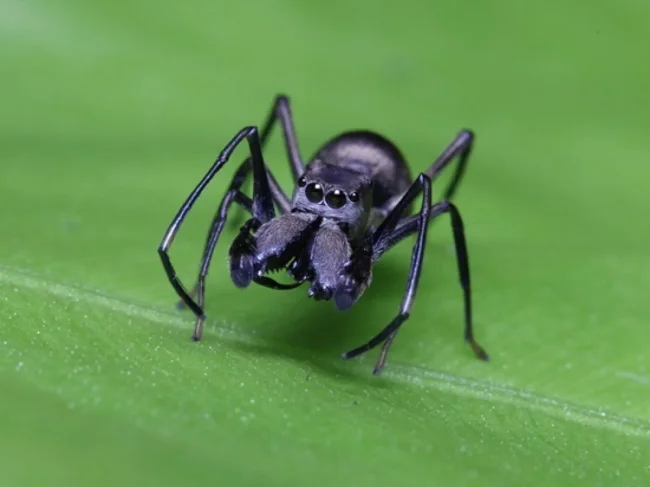
Hey, where are you going without a hat on that other leaf!?
During their observations, the researchers encountered a violation of the law of conservation of matter: the female was feeding outside the nest and did not bring food home, yet within 20 days, the spiderlings had almost tripled in size! By installing cameras directly above the nest, arachnologists discovered that the females leave droplets of a viscous, whitish liquid in the nest. The spiderlings then suck them up as needed. 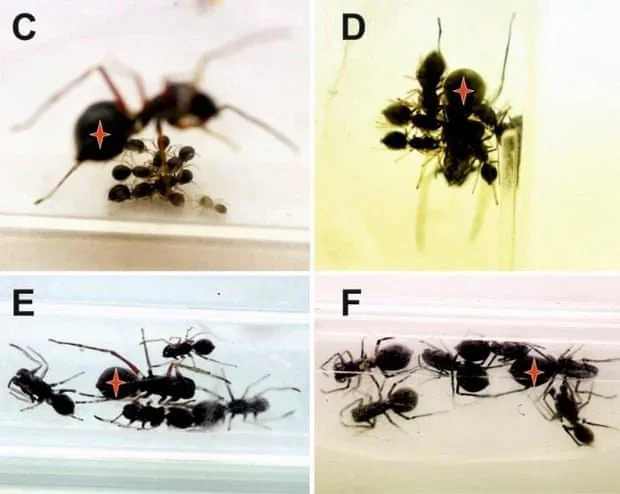
A female spider and her offspring in an artificial nest. The red cross marks the mother spider. You can see how quickly her offspring are growing.
Chemical analysis of spider milk has shown that it is incredibly nutritious. It contains four times more proteins than cow's milk! It turns out that female tiger spiders have a pair of specialized mammary glands located at the base of their abdomens. These allow mothers to feed their young without having to carry insects back to the nest. 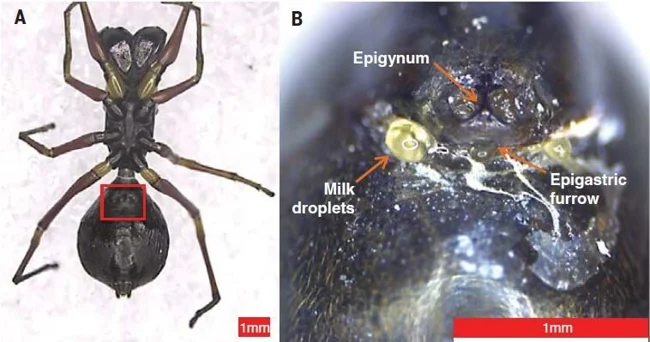
Those same spider mammary glands.
Bird's Milk
Most birds feed their young the same food they eat themselves. At best, they slightly digest the prey in their own intestines beforehand. But pigeons, parrots, flamingos, and some penguins have invented their own milk substitute. 
Drink from mom.
You can't make sweets out of it, though. Real bird's milk has an unpleasant taste to humans and is synthesized by cells in the crop—an outgrowth of the esophagus located before the stomach. When enough nutritious mixture accumulates in it, birds regurgitate the contents of the crop into the mouths of their chicks. Sounds a bit disgusting. 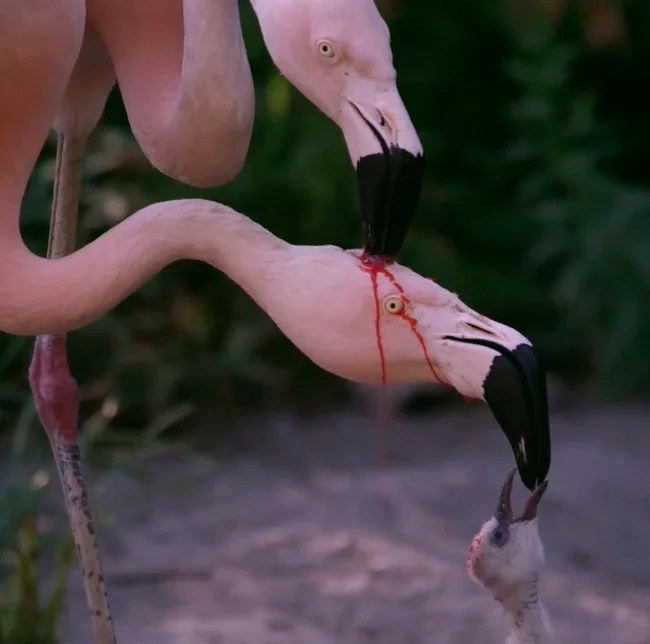
No, the flamingo doesn't peck its comrade in the head. You can read about what exactly is going on in the next paragraph!
But flamingo feeding isn't just disgusting, it's downright creepy. Their crop milk is the color of fresh blood. And when it flows from the beak of a greedily lapping chick, even a person with a strong stomach can feel ill. But in reality, its composition is quite ordinary, and the strange color comes from the coloring of the crustaceans on which the flamingos feed. 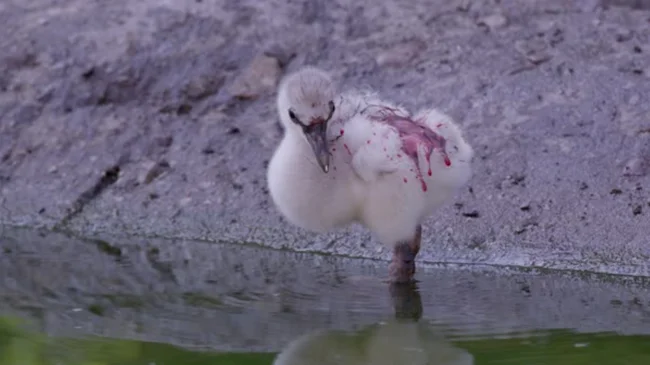
Well, there you go, I spilled borscht all over myself...
Amphibian Milk
Birds, spiders, and mammals aren't the only ones that feed their young with their own produce; caecilians are also among them. For those unfamiliar, caecilians are legless and half-blind amphibians, more similar in appearance to worms than to newts and frogs. They have neither a crop nor specialized mammary glands, but such trifles won't stop a mother eager to feed her young. 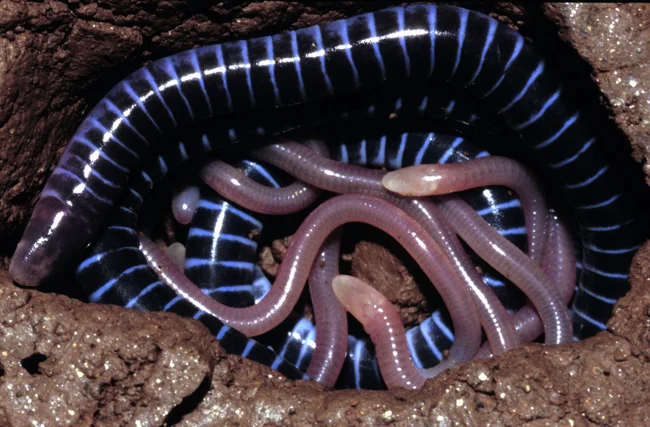
Here it is, a beautiful family of worms!
Immediately after laying eggs, the female begins to grow skin. Her epidermis becomes thick, loose, and rich in nutrients. After hatching, the young worms rush to their mother and grind down this skin with their flat, wide, spoon-like teeth. Oddly enough, this doesn't cause the mother much pain. Moreover, the babies never grind down the skin to the flesh, and the mother only allows them to feed on her once every few days. 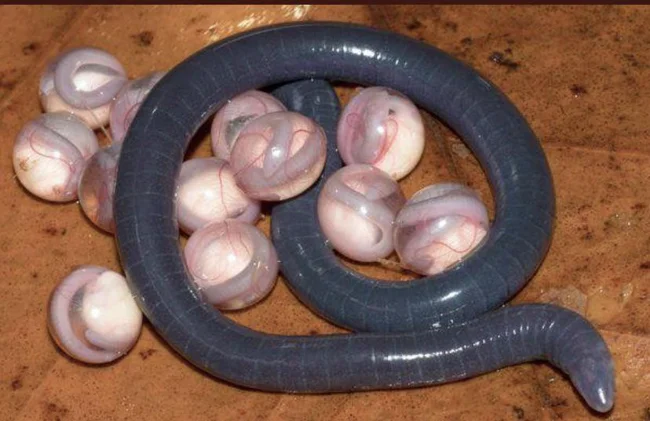
No, these aren't dumplings. These are caecilian eggs in the late stages of development. It's scary to imagine how she even managed to lay them.
Fish milk
It's very difficult to feed liquid food to young fish in water, as it dissolves too quickly. Even whales have to resort to this method; their milk is a curdled mass that barely dissolves in water. Discus fish, especially cichlid fish, feed their young with mucus from their own bodies. 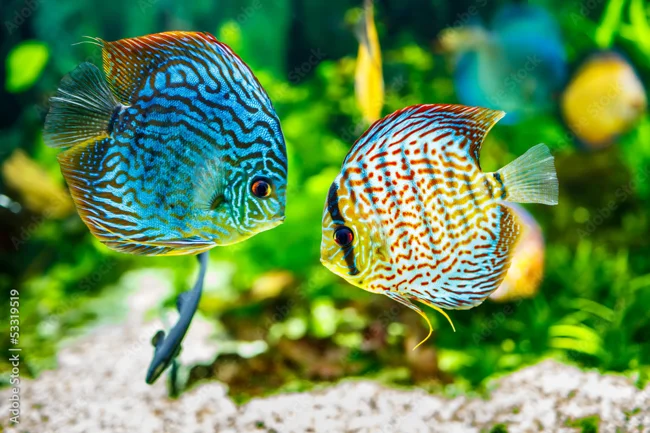
Discus are extremely popular aquarium fish. Therefore, if you're willing, you can even observe the feeding of their young at home!
All fish secrete mucus, which covers their bodies. Mucus improves hydrodynamics and protects the skin from parasites and fungi. But when a pair of discus fish hatch fry, both increase their production of the hormone prolactin. This, in turn, stimulates the epidermal cells to work harder and produce more mucus. 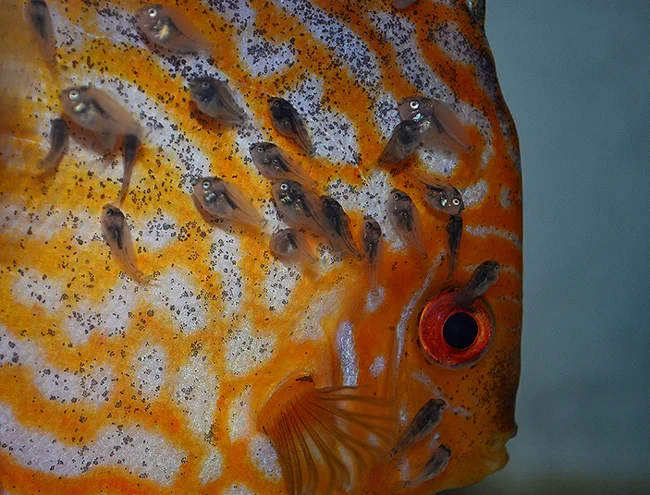
Bon appétit, kids!
The composition of the mucus also changes. Now it's not just an antibacterial liquid, but a substance rich in fats and proteins. It also contains high levels of potassium, sodium, calcium, and chlorine—vital micronutrients. Discus fish feed their fry mucus for 3-4 weeks, after which they begin to push them away so that the growing offspring can learn to forage for food on their own. 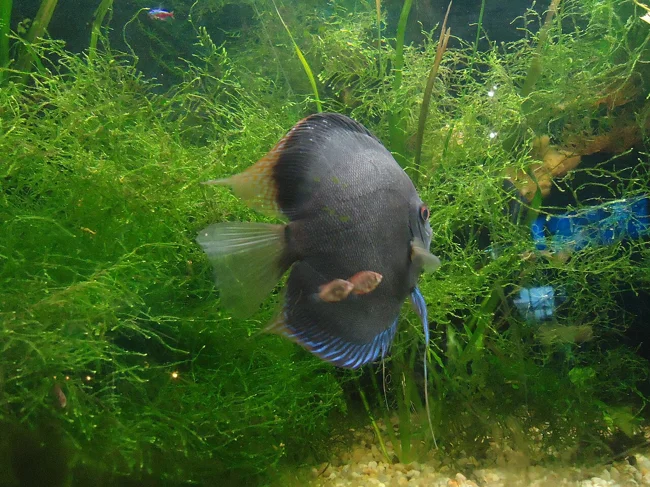
Even young fish periodically return to their parents to nibble on mucus. But they don't stay long. Both mother and father begin to chase away the insolent offspring.
Stingray Milk
In theory, stingrays should have the same problem as discus and whales: how to feed their offspring if milk or its analogs simply dissolve in water? But in reality, feeding their offspring is even easier for them than for most land mammals! 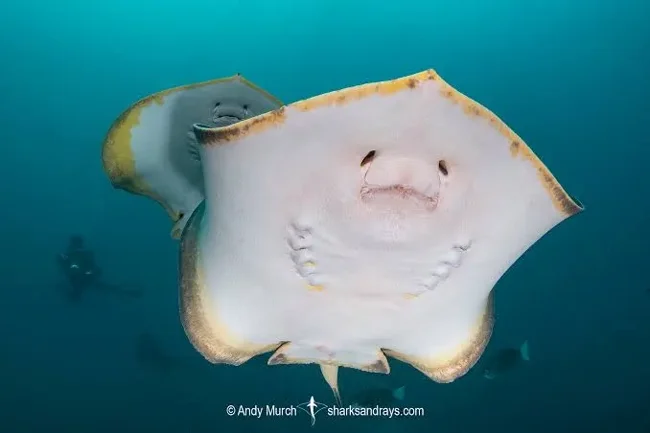
The joy of motherhood is written all over their faces!
Many stingrays are ovoviviparous. They do not lay eggs; their offspring develop directly inside the uterus in a controlled environment with a constant temperature. Some stingrays, such as the Far Eastern stingray, have learned to secrete nutrients through the epithelium of their uterus. Due to the completely sealed environment, the stingray milk does not dissolve in water, and the babies literally bathe in it! 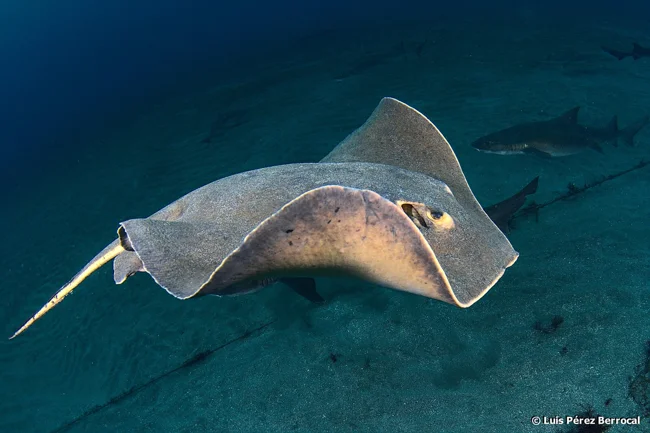
Everyone thinks you're doing nothing. But you're feeding your babies milk!
Jellyfish Milk
It would seem that jellyfish are the last species that shouldn't feed their young. They don't even have a central nervous system; they simply have nothing to think or care about! However, at least one species of the genus Trachymedusae is known whose young don't swim away upon hatching, but instead seek refuge under the mother's dome. It's not only safe there, but also delicious! The mother's epidermis secretes yellow, fatty droplets on the inside of the dome, which the young feed on for the first few days. 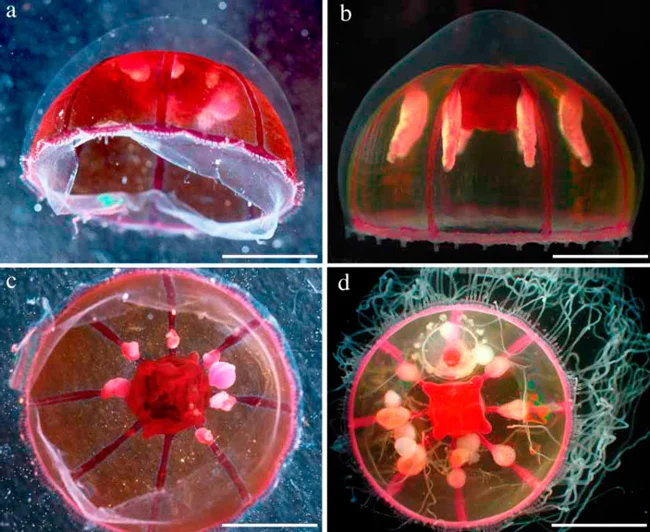
The offspring (under the mother's dome in photo d) have a yellowish tint to their bodies precisely because they feed on their mother's fats.


